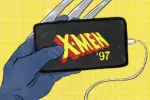Look up at the sky! It’s a bird! It’s a plane! It’s Superman! No wait, not just Superman — there’s also Batman, Wonder Woman, Green Lantern, Cyborg, the Flash and Aquaman riding his space whale!
Oh hold on, here comes the Avengers with their new pals Black Panther, Dr. Strange, Captain Marvel and a Spider-Man who isn’t Toby Maguire or Andrew Garfield!
Oh great, now the Guardians of the Galaxy are here and Rocket Raccoon wants Cyborg’s arm. Wait a second, the X-Men just showed up with Gambit and Deadpool.
Aw man, here comes the Fantastic Four … oh wait no never mind they just crashed and burned. Still, that’s a lot of superheroes.
Way back in 2008, Nick Fury dropped a line in an after-credits scene from “Iron Man” that intimidated Tony Stark and titillated audiences everywhere. “You think you’re the only superhero in the world?” Fury said. “Mr. Stark, you’ve become part of a bigger universe. You just don’t know it yet.”
Samuel L. Jackson’s quip turned out to be prophetic beyond his wildest dreams, predicting not only the expansion of Marvel’s Cinematic Universe, but the unprecedented rise of the superhero genre.
Unless you’re living under a rock that’s been coated with concrete and buried somewhere in North Korea (if that’s the case, kudos for being a dedicated reader), then you’ve probably noticed the influx of superhero movies over the past few years.
If you’re one of those people who doesn’t like superhero films, I’m afraid I have some bad news: Between now and 2020, close to 40 of them will either be announced or in production.
Our culture has always been obsessed with the idea of heroes in one form or another, but recently the entertainment industry has been has been flooded with costumed crime fighters lifted straight from comic book pages.
What’s more, the trend is expanding with every passing year. 2016 will mark a huge turning point as both of Marvel’s rivals, DC and Fox, will unleash their own shared cinematic universes to match Marvel’s monstrous success.
It’s a move meant to rake in big bagfuls of cash, but with the superhero trend running so hot, it’s only a matter of time before the whole thing implodes .
Although Hollywood seems set on beating the superhero genre into the ground like the Hulk did to Loki in “The Avengers,” this should come as no surprise.
Hollywood has always taken the trendy and let it run its course, going back to the early 1940s when westerns dominated the filmscape.
Back then, westerns were basically superhero films with smaller budgets. They involved larger-than-life heroes facing down dastardly villains, and they dominated the box office for years.
The genre grew from the sense of helplessness and monotony that ran rampant in the United States after World War II, but as audiences settled into their new domestic roles, the harshness of the wild frontier lost its appeal. Studio execs forced the cowboys to ride off into the sunset one final time where they presumably laid down and died.
When the ’80s rolled around, the new trend was highlighting young adults. It sparked the rise of teen angst films and coming-of-age stories (thanks John Hughes), but that trend ended when all the young people of that era grew up.
After that, the 90s introduced Tom Hanks to the world, and suddenly the prolific actor was everywhere. That trend stopped once people realized that Tom Hanks was no mere man and began recognizing him for the omniscient, joy-bringing movie god that he is.
The trend most college kids will recognize is the Found Footage format for horror movies.
During the time period between 2006 and 2013, Hollywood executives were probably the happiest they’ve ever been. The Found Footage trend allowed them to produce extremely cheap horror movies that audiences gobbled up relentlessly.
Of course, like all trends, this one eventually ran its course. It ended when everyone fully understood that these weren’t real ghost stories.
I mean, of course everyone knew they were fake to begin with, but what had made them so scary was the idea that what we were watching had maybe actually happened. After churning out Found Footage film after Found Footage film, the part of our brain that was believing that lie eventually shriveled up and ceased to function.
Today, superheroes are clearly the biggest trend in the film industry. Much like how westerns played off man’s fear of domesticity, superhero films capture the desire for larger-than-life heroes to save the day from nefarious threats.
The most interesting thing about the superhero trend is all the different subgenres and styles that have kept it alive and thriving for so long. It can all be traced back to 2008, where two very different superhero films laid the groundwork for where we are today.
Marvel’s in the Empire Business
The first film released in Phase One of Marvel’s ambitious plan was Iron Man in 2008.
All of Marvel’s current success traces back to this film, and if it would have flopped, the movie landscape would look extremely different right now.
On all accounts, “Iron Man” SHOULD have failed. It took a C-list character nobody outside of dedicated comic book fanboys knew much about, starred an actor with the reputation of a washed up drug addict and was directed by a man whose biggest film at the time was “Elf.”
How did those elements come together to produce one of the biggest hits of the year? In a few words: it was fun.
Helped by the seemingly endless charisma of Robert Downey Jr., “Iron Man” was a blockbuster with a clear sense of what it wanted to be and delivered a highly entertaining and enjoyable film.
It was a perfect cornerstone to everything Marvel wanted their movies to represent and with it they were ready to move forward.
Now Marvel is a gazillion dollar studio that seemingly cannot fail. All it took was patience, careful planning and several white dudes named Chris for the company to construct their flawless cinematic universe.
Marvel has turned into a well-oiled machine of efficiency, churning out hit after hit and course-correcting when something goes wrong. Oh, Ed Norton isn’t working as the Hulk? Replace him with Mark Ruffalo. Oh, there’s a staggering amount of white males leading our films? Focus on developing movies around Black Panther, Captain Marvel and Wasp.
Marvel executives are also apparently mustache-twirling money-grubbers who like to pay their actors in Trident gum.
They have a tendency to seek relatively up-and-coming talent that they can buy for cheap, have them sign a nine-picture deal, and keep paying them a pittance even as they become megastars. It’s ruthless, but it’s allowed Marvel to become the monstrous success it is today.
Be warned though: Marvel’s unstoppable rise might also be their downfall. Their cinematic universe was revolutionary and unheard of when first announced, but now it seems like every studio wants to copy Marvel in creating one.
Plus, when you have a cinematic universe and keep adding new superheroes to it, it becomes a little distracting when the superheroes don’t run into one another.
In almost every Phase 2 standalone movie, audiences always asked why the hero didn’t just call the other Avengers to come help. Now with Phase 3 setting in, even more superheroes are getting origin stories and the gigantic world Marvel has pieced together seems dangerously close to collapsing.
DC Needs to Tread Lightly
2008 was a monumental year for DC with the release of Christopher Nolan’s “The Dark Knight.” For a movie about a guy who dresses up like a bat to fight crime, it was a tremendously high quality film.
It defined what it meant for a superhero film to be “dark and gritty.” Now you hear a lot of superhero films describe themselves as “dark and gritty,” when what they really mean is “We are trying to be like ‘The Dark Knight.'”
It received almost universal praise and cemented DC in the superhero movie business. The only problem? That version of Batman was completely standalone, not connected to any larger Cinematic Universe.
Once Nolan’s Batman series concluded with “The Dark Knight Rises” in 2012, the same year “The Avengers” was released, DC had a major problem.
It looked over at Marvel and saw that its Cinematic Universe was crazy successful and realized they now had nothing. What could they do? They tried throwing a lot of money in Christopher Nolan’s direction, hoping he would continue making Batman films that connected to a larger universe.
They tried copying Marvel’s formula by releasing “Green Lantern,” a poorly put together imitation of “Iron Man” (cocky, charismatic lead character suddenly has a change of heart after a life-changing experience), and it failed spectacularly. It struggled to make back its massive $200 million budget and scored a measly 26 percent on Rotten Tomatoes.
Then DC realized that they needed to differentiate from Marvel’s light-hearted adventures by telling stories with a bit more edge to them.
Cue “Man of Steel,” a film that took all the wonder and fun away from Superman to make him “dark and gritty.” It had some major flaws, like beating you over the head with Christ imagery and a controversial neck-snapping, but it was the first of DC’s attempts to create their own Cinematic Universe.
That forward momentum will continue in 2016 with the release of “Batman v. Superman: Dawn of Justice” and the even darker project “Suicide Squad,” which focuses completely on the villains.
It cannot be overstated how much DC needs these two movies to be successful. They have the next five to six years planned out in their own cinematic universe, which they call their DC Extended Universe, and it’s all based on the success of these two films.
Somebody Get a Ruler …
Although these film studios continue to build, one galaxy with two universes in it is a little crowded. Can they coexist or, as Charles Xavier would put it, are they destined to destroy each other?
That question was brought to a head when Marvel and DC each reserved the same date for a major release. May 6, 2016, almost saw the showdown between “Captain America 3” and “Batman v. Superman.”
In one corner, you have Chris Evans returning as Captain America after his first sequel was met with near universal acclaim and made close to a billion dollars. In the other corner, you have the first ever live-action team up of two of the most famous superheroes of all time.
What would happen? Would one film steal away the other’s audience? Would they both be extremely profitable? Would they both suffer?
For a while, neither side backed down, puffing their chests and waiting for the other studio to blink and change the date. After what seemed like an eternity, DC finally caved and pushed “Batman v. Superman” up a few months.
They said it was to better accommodate their other releases, but the decision had to make all the studio executives breathe a little easier.
This was the first time this happened, but given the large slate of superhero movies on the horizon, will it be the last? Most definitely not.
Only time will tell if these studios will continue the current pattern of leaving a few weeks in between rival movies, or if one of them will vie for complete dominance and go head-to-head.
The smart choice seems to be to stay away from one another, but these opponents can only circle each other for so long before someone strikes.
To Be Continued …
At the end of every Marvel movie, there is a blurb telling audiences when they can see their favorite heroes next (for example: at the end of “Captain America: The Winter Soldier,” the credits said “Captain America will return in ‘The Avengers: Age of Ultron'”).
Maybe that touches upon why people are so enamored with superhero movies. The story never ends. There will always be another threat to the world that requires the forces of good to triumph over evil.
Maybe at the heart of it, that’s what it’s about — the world can be a bleak place, but superhero movies offer the comforting reassurance of clearly defined sides, pure good versus pure evil, and audiences always know which side is always going to win. That, or people could just love Robert Downey Jr. Either/or.
















